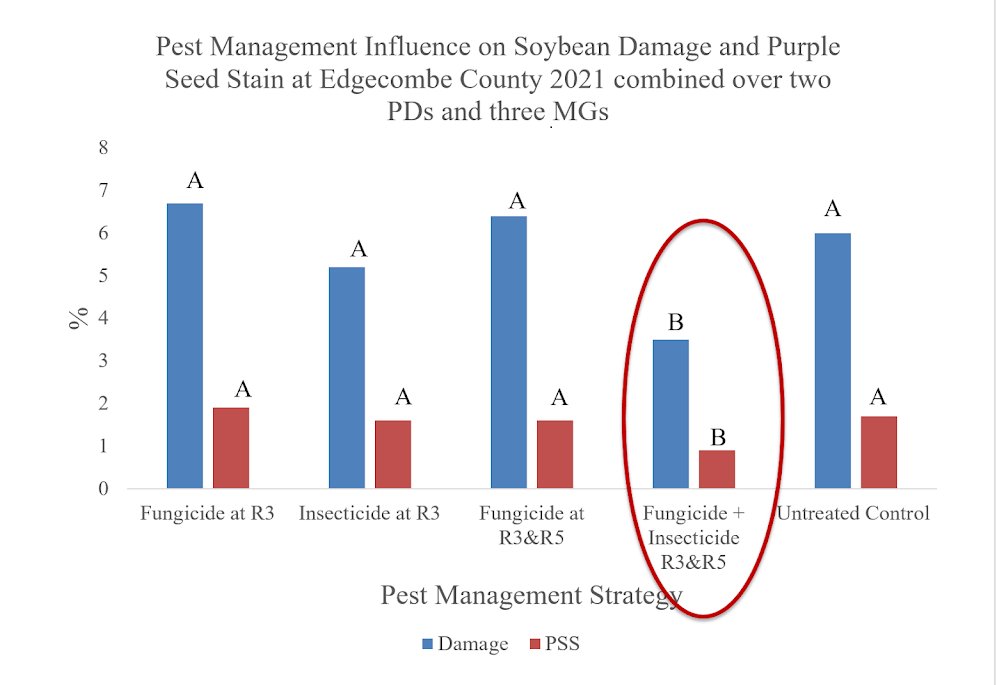Can We Protect Soybean Seed Quality Through Pest Management?
go.ncsu.edu/readext?896052
en Español / em Português
El inglés es el idioma de control de esta página. En la medida en que haya algún conflicto entre la traducción al inglés y la traducción, el inglés prevalece.
Al hacer clic en el enlace de traducción se activa un servicio de traducción gratuito para convertir la página al español. Al igual que con cualquier traducción por Internet, la conversión no es sensible al contexto y puede que no traduzca el texto en su significado original. NC State Extension no garantiza la exactitud del texto traducido. Por favor, tenga en cuenta que algunas aplicaciones y/o servicios pueden no funcionar como se espera cuando se traducen.
Português
Inglês é o idioma de controle desta página. Na medida que haja algum conflito entre o texto original em Inglês e a tradução, o Inglês prevalece.
Ao clicar no link de tradução, um serviço gratuito de tradução será ativado para converter a página para o Português. Como em qualquer tradução pela internet, a conversão não é sensivel ao contexto e pode não ocorrer a tradução para o significado orginal. O serviço de Extensão da Carolina do Norte (NC State Extension) não garante a exatidão do texto traduzido. Por favor, observe que algumas funções ou serviços podem não funcionar como esperado após a tradução.
English
English is the controlling language of this page. To the extent there is any conflict between the English text and the translation, English controls.
Clicking on the translation link activates a free translation service to convert the page to Spanish. As with any Internet translation, the conversion is not context-sensitive and may not translate the text to its original meaning. NC State Extension does not guarantee the accuracy of the translated text. Please note that some applications and/or services may not function as expected when translated.
Collapse ▲Each day this week we are releasing information delivered at the Soybean Field Day at the NCDA&CS Piedmont Research Station in September for those who could not attend.
Mid-Season Management:
Environment, genetics, and management interact to affect soybean seed quality. Changes in soybean management across North Carolina have resulted in more encountered seed quality issues and a robust need to understand drivers in seed quality declines. Hot and humid weather conditions early in the year can allow for growth and spread of fungus and disease that can cause seed damage. Insect pests may also interact with seed quality issues. We need a more robust understanding of what causes seed quality declines and management strategies to protect seed quality are needed.
From 2021-2023 research is being conducted on the influence of planting date, maturity group, and pest management on soybean yield and seed quality across the state. The study is being conducted in a split-split plot design with main plot as planting date (late March, mid-April, mid-May), sub-plot as maturity group (III, IV, V), and sub-sub-plot as pesticide management which includes combinations of fungicides and insecticides.
Pest management affected soybean yield consistently across environments, planting dates, and maturity groups, with multiple fungicide applications increasing yield compared to the untreated control. The only treatment that protected seed quality was later-season insecticide applications coupled with fungicide applications.
– Kelly O’Reilly, graduate student and Dr. Rachel Vann, Soybean Extension Specialist.
Most of our soybean insect pest thresholds are based on scouting with a sweep-net. One swoosh of the net equals one “sweep.” There are a few important soybean insect pests that we have in North Carolina and the only way to know if control is warranted is to determine if the pest population is above the threshold.
It is important to spray only when necessary because there are several beneficial insects that may already be keeping pest populations low. Numbers of the beneficial insect species in the field do not recover as quickly as pest populations do after a broad-spectrum insecticide has been applied. This helpful guide has color photos of insects and can help farmers monitor pest populations as well as some high-quality photos of beneficial insects we may find.
– Agents Jenny Carleo and Laura Elmore



